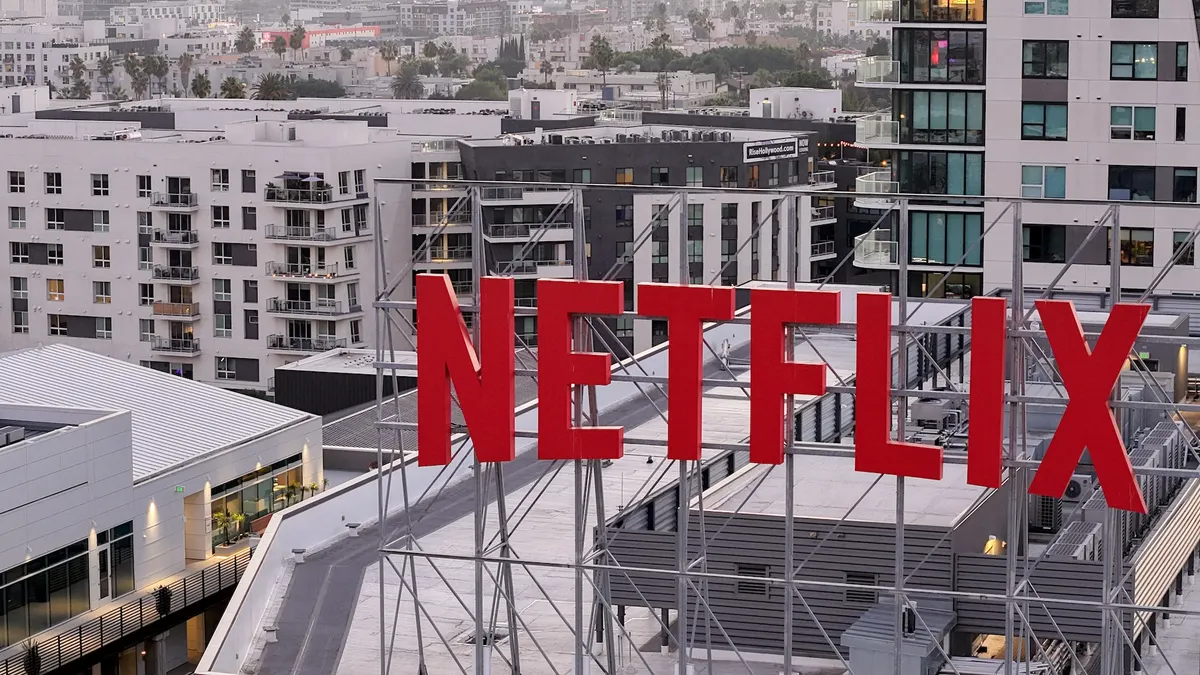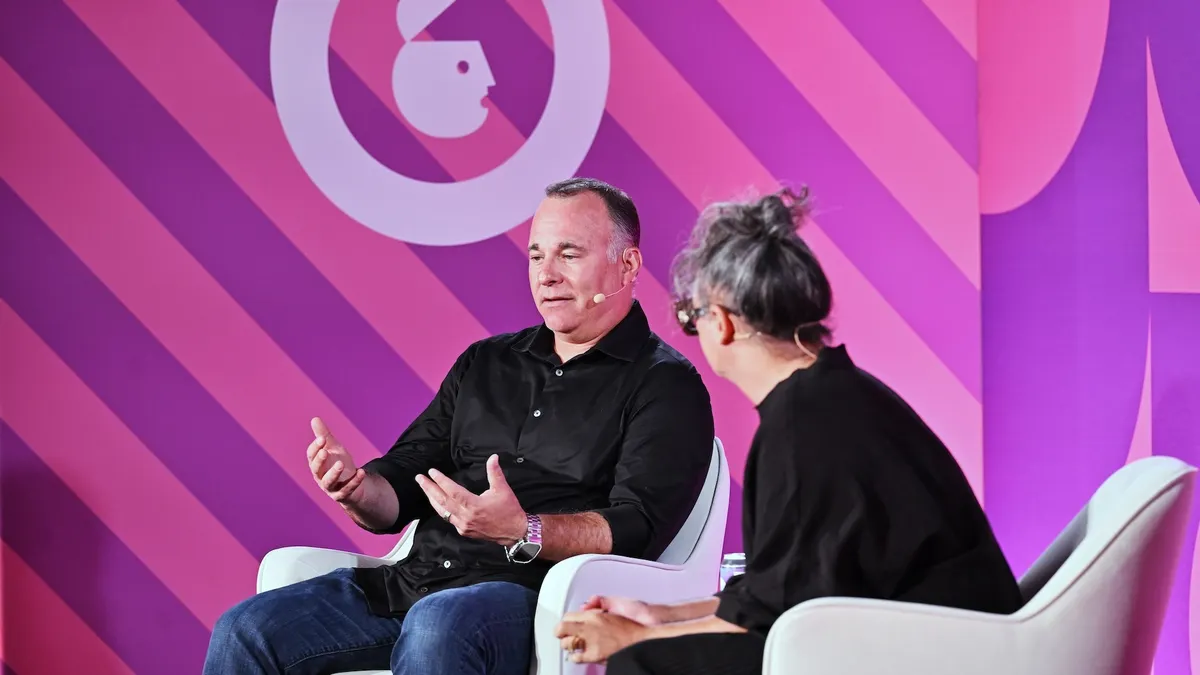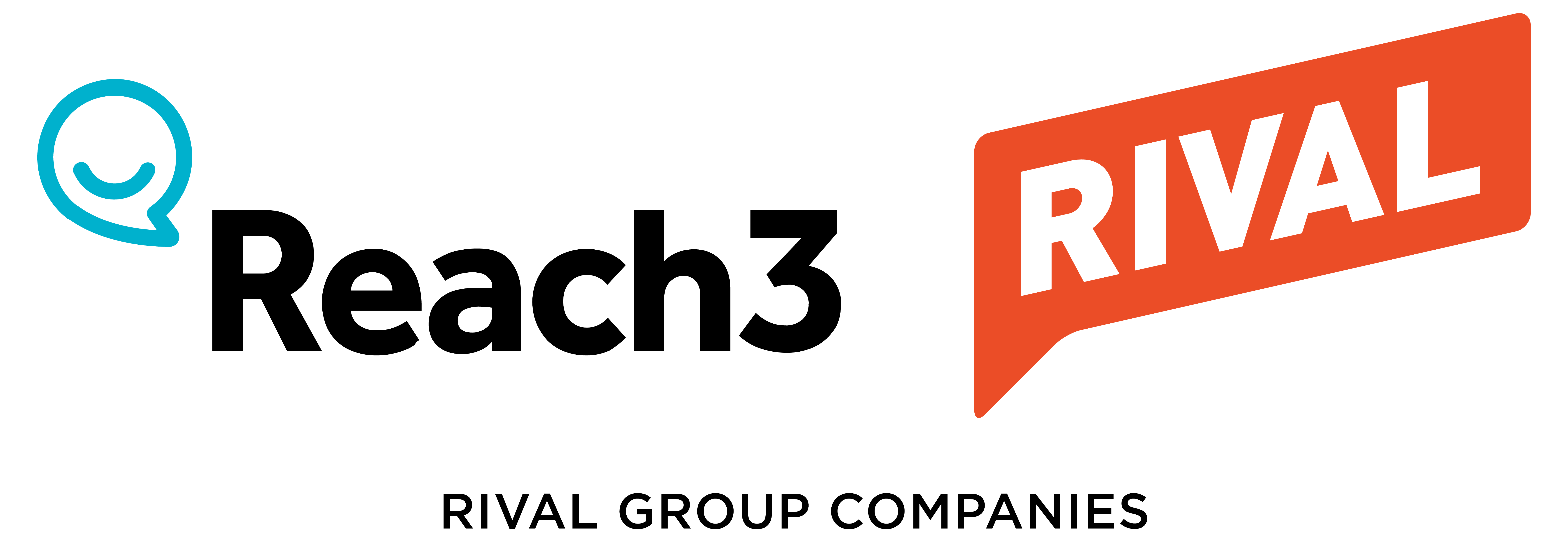Dive Brief:
- Netflix, in a letter to shareholders, reported its best ad sales quarter to date in Q3 2025 and said it is on track to more than double its ad revenue in 2025. Its U.S. upfront commitments doubled during the period and Netflix Ad Suite was deployed across all 12 of its ad markets, the company said.
- Netflix executives detailed priorities for its advertising offering, including improving ways to buy, target and plan campaigns and using artificial intelligence (AI) to test dozens of ad formats.
- The company saw revenue grow in-line with its forecast in Q3 and still sees room to grow its core and advertising businesses amid an evolving media landscape that could see the sale of Warner Bros. Discovery.
Dive Insight:
Netflix executives said the company is now in the “walk” phase of its “crawl-walk-run” framework for advertising as it has achieved scale and rolled out its first-party ad tech stack in the 12 ad markets it serves. After its best quarter for ad sales to date, the company is set to double ad revenue in 2025 — albeit from a small base, compared to subscription revenue — as U.S. advertisers up their commitments to the platform.
Netflix generated around $650 million in U.S. advertising revenue in 2024, implying at least $1.3 billion in U.S. ad revenue in 2025, per Madison and Wall estimates. Encouragingly, the company is seeing higher growth rates in programmatic advertising — a pathway to incremental ad revenue — and executives are confident in the growth trajectory of its ad business.
“Advertisers are excited about our growing scale. We've got a highly attentive and engaged audience. The rollout of our ad tech stack means we've got more formats. We've got more measurement. We've got more ways to buy. And of course, our slate is a critical and important source of competitive differentiation,” said Co-CEO Greg Peters on an earnings call.
Executives laid out key priorities for the company’s ad business in Q4 and beyond on the call. It is working to increase the diversity of advertisers and the way they can buy ads, as with recent partnerships with Amazon DSP and AJA in Japan. The company is working to improve data-driven targeting, media planning and measurement capabilities as well as expanding ad formats, with ad interactivity coming later this quarter.
While Q3 revenue grew in-line with internal forecasts, Netflix took a hit to its operating margin due to an ongoing dispute with Brazilian tax authorities. While this caused the company’s stock to drop after it announced earnings this week, the company still sees room for profitable growth in the core business, according to Co-CEO Ted Sarandos.
“We continue to have a massive opportunity since we're only about 7% of the addressable market, in terms of consumer spending and only about 10% of time spent on TV in our biggest market,” Sarandos said on the call.
The earnings call came as Warner Bros. Discovery said it was open to a sale, with Netflix reportedly among the companies with interest in the media conglomerate. While executives noted that Netflix has historically “been more builders than buyers” and that it has no interest in owning legacy media networks, they did not close the door completely on M&A activity.
“It's our responsibility to look at every significant opportunity,” Peters said. “We've got a clear framework to evaluate those opportunities, and we'll do whatever we think is best to grow the business.”
As part of that growth strategy, the company remains committed to internal AI development. Executives noted a few uses where the company could focus its AI efforts going forward, including better product experiences, content production and advertising, including plans to innovate dozens of new ad formats ahead of 2026.
“We're not worried about AI replacing creativity, but we're very excited about AI creating tools to help creativity,” Sarandos said.













